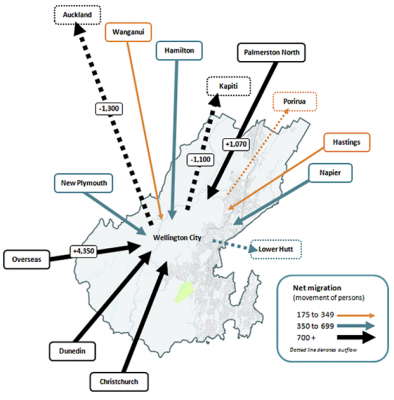Moving from where you currently live is generally a big deal because it is typically costly and in particular it is hard to leave your local friends and family. People tend to have different propensities to migrate at different times throughout their lives. Young adults move more frequently than the middle aged; young families stay put if they can; empty nesters move to be closer to their grand children; and the elderly move only when they absolutely have to. What drives migration?
Why do people move house?
Making the decision to move can be driven by events or simply expressing your life stage. We move for work, to get a more affordable housing, to be closer to family, for lifestyle reasons, for health reasons, for educational opportunities – and for political asylum.
Economic and lifestyle reasons are probably the two most significant drivers of migration. People make decisions to move based on their perceived understanding of the opportunities a place is offering them. If this decision is rational then it often reflects the role the place of destination is playing in economic terms within the country or region.
At various geographic scales, countries and regions therefore become either dominant ‘recipient’ places or places that lose people in net terms.
How does this shape Wellington’s population?
Have a look at the map below from the Wellington City forecast.id website.
Historical migration flows, Wellington City, 2001 to 2006

The map shows Wellington lost people to Auckland largely for employment opportunities (and some may say better weather) and Kapiti for lifestyle/retirement reasons (and some may say better weather)*. There was also a loss to Lower Hutt and Porirua, probably for housing opportunities. On the other side of the equation Wellington gained people from Christchurch, Dunedin and Palmerston North (with population gains in net terms); In fact there were gains for Wellington from pretty well everywhere else, including the most significant being from Overseas. Wellington is therefore a ‘dominant’ place, probably largely due to the important role it plays as the national capital of New Zealand; and also as a centre for educational, economic and cultural opportunity – but nevertheless, Auckland dominates more.
How much growth is desirable?
Many of the councils I visit and elected members and council officers I talk to, want to be part of a ‘dominant’ growing place; and if their place is not, they generally want it to become so. It is impossible for all places to have net gains in the migration of people and I suspect that having growth in your population is not necessarily synonymous with being a great place to live. Some may see this ‘growth’ attitude as being healthy competition between places; and it may be so, but I think that first and foremost places should strive to have a good understanding of the role and function that they are playing within their region and look at ways of building on their strengths rather than seeing ‘growth’ as the most important measure of ‘success’.
Ironically, the administrators of places that are encountering rapid growth see managing rapid growth as their most significant challenge, while the administrators of places that encounter population loss see population loss as their most significant challenge.
Are places that are stable therefore ‘sustainable’ and by definition ‘successful’ places?
The New Zealand population is relatively stable. There is a significant Kiwi diaspora of something like 20% of the population. New Zealanders are rampant travellers. They go away and return with knowledge and experience of far away places bringing back and implementing ideas that make their place better, but the population is not on a rapid growth path. Nevertheless New Zealand is very successful by any Kiwis standards – as we go to press, they are about to win the Rugby World Cup for God’s sake!
.id has recently completed population forecasts for the City of Wellington (forecast.id) which show that the City will grow by 31,869 people by 2031 to a total of 230,614. Despite Wellington’s regional dominance in terms of net migration, this is a growth rate of only 0.75% per annum and it is apparent that some users of the forecasts feel concerned about the relatively ‘conservative’ population and household growth results.**
However, as a demographer and current resident of Wellington, I certainly don’t see Wellington’s growth that way. I think it reflects well the level of Wellington’s ‘dominance’ within its region , tempered by the strong migration pull that Auckland asserts on the country. Wellington’s measured, steady growth is what makes it such a great place to live, despite the weather.
NOTES:
*For the record, I have chosen to live in Wellington because it is a great city to live in, but you don’t go there for the weather.
**Please note, forecast.id for Wellington City is regularly monitored and reviewed to reflect changes that will impact of levels of development and migration (and household and population growth).
Tell us about what has influenced your decisions to move house….
.id is a team of demographers, population forecasters, spatial planners, urban economists, and data experts who use a unique combination of online tools and consulting to help governments and organisations understand their local areas. Access our free demographic resources here










